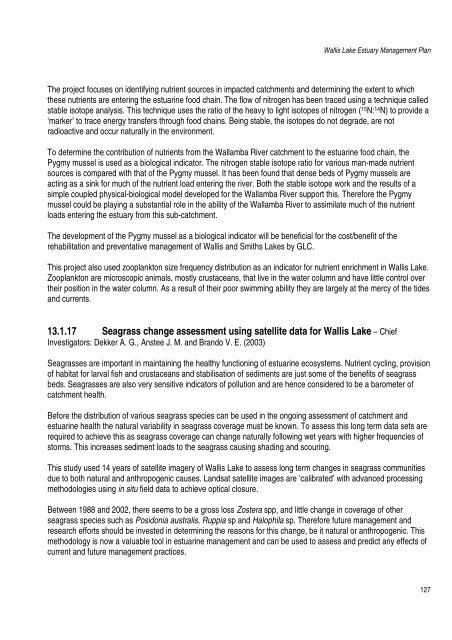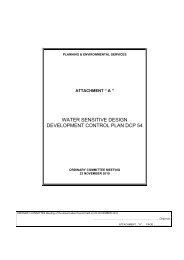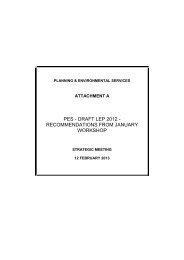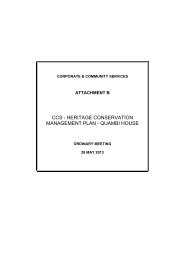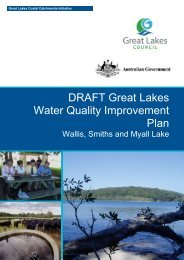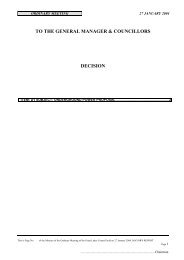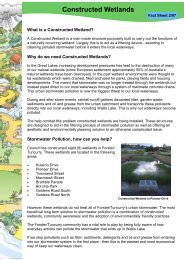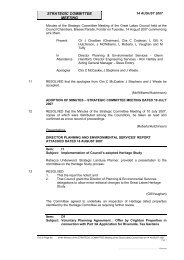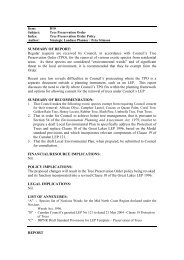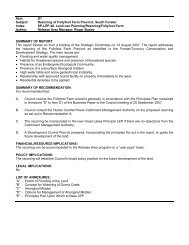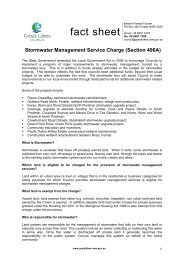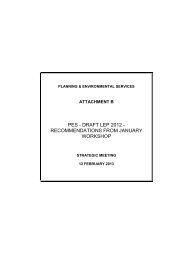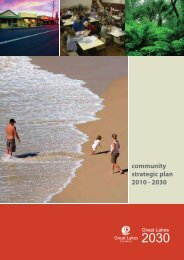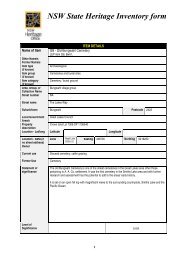13.2 The Wallis Lake Estuary Management Committee - Great Lakes ...
13.2 The Wallis Lake Estuary Management Committee - Great Lakes ...
13.2 The Wallis Lake Estuary Management Committee - Great Lakes ...
You also want an ePaper? Increase the reach of your titles
YUMPU automatically turns print PDFs into web optimized ePapers that Google loves.
<strong>Wallis</strong> <strong>Lake</strong> <strong>Estuary</strong> <strong>Management</strong> Plan<br />
<strong>The</strong> project focuses on identifying nutrient sources in impacted catchments and determining the extent to which<br />
these nutrients are entering the estuarine food chain. <strong>The</strong> flow of nitrogen has been traced using a technique called<br />
stable isotope analysis. This technique uses the ratio of the heavy to light isotopes of nitrogen ( 15 N: 14 N) to provide a<br />
‘marker’ to trace energy transfers through food chains. Being stable, the isotopes do not degrade, are not<br />
radioactive and occur naturally in the environment.<br />
To determine the contribution of nutrients from the Wallamba River catchment to the estuarine food chain, the<br />
Pygmy mussel is used as a biological indicator. <strong>The</strong> nitrogen stable isotope ratio for various man-made nutrient<br />
sources is compared with that of the Pygmy mussel. It has been found that dense beds of Pygmy mussels are<br />
acting as a sink for much of the nutrient load entering the river. Both the stable isotope work and the results of a<br />
simple coupled physical-biological model developed for the Wallamba River support this. <strong>The</strong>refore the Pygmy<br />
mussel could be playing a substantial role in the ability of the Wallamba River to assimilate much of the nutrient<br />
loads entering the estuary from this sub-catchment.<br />
<strong>The</strong> development of the Pygmy mussel as a biological indicator will be beneficial for the cost/benefit of the<br />
rehabilitation and preventative management of <strong>Wallis</strong> and Smiths <strong>Lake</strong>s by GLC.<br />
This project also used zooplankton size frequency distribution as an indicator for nutrient enrichment in <strong>Wallis</strong> <strong>Lake</strong>.<br />
Zooplankton are microscopic animals, mostly crustaceans, that live in the water column and have little control over<br />
their position in the water column. As a result of their poor swimming ability they are largely at the mercy of the tides<br />
and currents.<br />
13.1.17 Seagrass change assessment using satellite data for <strong>Wallis</strong> <strong>Lake</strong> – Chief<br />
Investigators: Dekker A. G., Anstee J. M. and Brando V. E. (2003)<br />
Seagrasses are important in maintaining the healthy functioning of estuarine ecosystems. Nutrient cycling, provision<br />
of habitat for larval fish and crustaceans and stabilisation of sediments are just some of the benefits of seagrass<br />
beds. Seagrasses are also very sensitive indicators of pollution and are hence considered to be a barometer of<br />
catchment health.<br />
Before the distribution of various seagrass species can be used in the ongoing assessment of catchment and<br />
estuarine health the natural variability in seagrass coverage must be known. To assess this long term data sets are<br />
required to achieve this as seagrass coverage can change naturally following wet years with higher frequencies of<br />
storms. This increases sediment loads to the seagrass causing shading and scouring.<br />
This study used 14 years of satellite imagery of <strong>Wallis</strong> <strong>Lake</strong> to assess long term changes in seagrass communities<br />
due to both natural and anthropogenic causes. Landsat satellite images are ‘calibrated’ with advanced processing<br />
methodologies using in situ field data to achieve optical closure.<br />
Between 1988 and 2002, there seems to be a gross loss Zostera spp, and little change in coverage of other<br />
seagrass species such as Posidonia australis, Ruppia sp and Halophila sp. <strong>The</strong>refore future management and<br />
research efforts should be invested in determining the reasons for this change, be it natural or anthropogenic. This<br />
methodology is now a valuable tool in estuarine management and can be used to assess and predict any effects of<br />
current and future management practices.<br />
127


